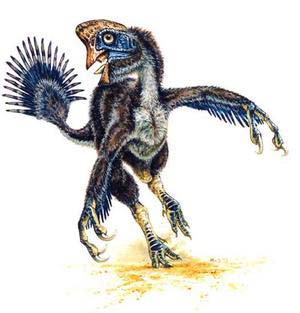 |
|
Illustration of the new dinosaur, Hagryphus (Image: LiveScience) |
The fossil discovered in southern Utah (USA) five years ago belongs to a new species of dinosaur resembling a 2.1-meter tall turkey, adorned with colorful feathers and capable of running at speeds of 40 km/h, living 75 million years ago.
The fossilized feet and claws of this carnivorous creature were found at the Grand Staircase-Escalante National Monument near the Arizona border, giving scientists reason to believe that they roamed from Canada down to southern New Mexico.
This creature is named Hagryphus giganteus, or the colossal four-legged bird god of the western desert. Much smaller variants of it were previously only found in Montana, South Dakota, and Alberta, Canada.
The discovery of fossils in southern Utah has doubled the area considered to be its habitat.
This bird-like dinosaur had a strong toothless beak, powerful arms, and formidable claws that allowed it to consume both animals and plants. The large feathers growing at the end of its back, after the animal lost its tail, gave it a turkey-like appearance, said Lindsay Zanno, a member of the research team who named the creature.
Scientists are not quite sure about the purpose of these feathers but believe they were not for flying. “It’s quite different from modern birds,” she said.
The bones were found back in 2001, but it took several years for scientists to excavate, study, and announce it as a new dinosaur species.
T. An


















































